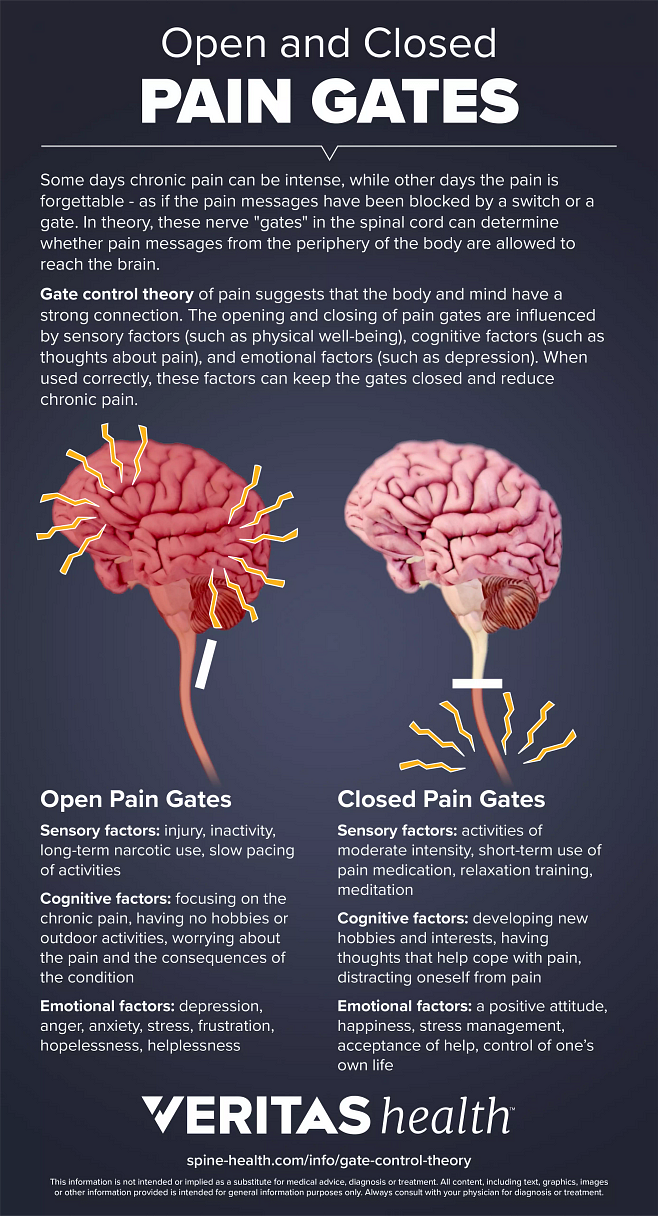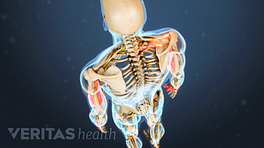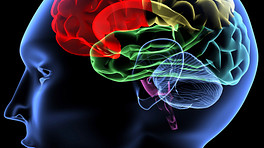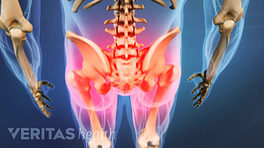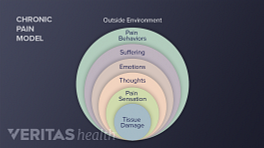Some days chronic pain can be intense, while other days the pain is forgettable - as if the pain messages have been blocked by a switch or a gate. In theory, these nerve "gates" in the spinal cord can determine whether pain messages from the periphery of the body are allowed to reach the brain.
Gate control theory of pain suggests that the body and mind have a strong connection. The opening and closing of pain gates are influenced by sensory factors (such as physical well-being), cognitive factors (such as thoughts about pain), and emotional factors (such as depression). When used correctly, these factors can keep the gates closed and reduce chronic pain.
Open Pain Gates
- Sensory factors: injury, inactivity, long-term narcotic use, slow pacing of activities
- Cognitive factors: focusing on the chronic pain, having no hobbies or outdoor activities, worrying about the pain and the consequences of the condition
- Emotional factors: depression, anger, anxiety, stress, frustration, hopelessness, helplessness
Closed Pain Gates
- Sensory factors: activities of moderate intensity, short-term use of pain medication, relaxation training, meditation
- Cognitive factors: developing new hobbies and interests, having thoughts that help cope with pain, distracting oneself from pain
- Emotional factors: a positive attitude, happiness, stress management, acceptance of help, control of one’s own life
